| | [Addendum - The weather DID turn hot, so don't seed or transplant when temperatures are above 85 degrees!] Continue taking advantage of our inordinately cool weather by sowing more seeds and transplanting more seedlings of summer crops. I know I’ve been repeating this for some some time, but since the coolishness continues, so does my urging. Just the concept of sowing seeds in mid-to-late June is extraordinary for my inland Pasadena garden, as is the supremely comfortable weather with nary a couple of sunny breakthroughs each afternoon, with daytime temperatures barely in the mid-80s and nighttime temperatures in the low 60s. I keep waiting for “the other shoe to drop” in finally turning to our normally hot weather when sowing and transplanting are wasted efforts because plantlets can’t get a good hold in their soil before being fried, but it hasn’t happened yet. So, look forward to continuing summer crops by continuing to plant them! Artichoke/Asparagus Bed Transition A case in point is my bed that was artichokes, asparagus, lettuce and spinach. The artichokes were harvested and are now pushing up new growth – so I know they’re perennial instead of annual varieties. The asparagus gave us a couple of spears from each plant (I didn’t want to harvest more since they’re pretty skimpy in their third year of growth) and the remaining fronds I’ll allow to develop until they turn brown in the late fall, having reabsorbed all their energy so they’ll put up more spears next spring. The lettuce and spinach are long gone, since even “bolt-resistant” varieties don’t thrive during our too-hot summer. Besides, my overall conviction is to grow whatever truly thrives in whichever season rather than trying to nurture something just to get a couple more weeks of struggling production. Of course, since we never know what the weather will truly do, I still make all those efforts, but my major soil-prep and plant-variety choices are determined by getting a jump on the coming-season. So in that artichoke-and-asparagus bed, the front and middle are now squashes and beans and cucumbers that I seeded 3 weeks ago. I planted beans and cukes around the front and part of the sides of the sunken water bins with their trellises so they can grow up without being overshadowed by the artichokes/asparagus in the back. The squashes are between the bins in front so allow them to sprawl along the front edge that faces south so they’ll get the brunt of the afternoon sun. Prior to my sowing this bed so intensively, I’d turned the soil trowel-deep, watered it, spread a one-inch-thick layer of coffee grounds and then a one-inch layer of compost, and watered it again. All of this to create a rich and moist environment several inches deep into which I pushed the seeds. I always insert 2 seeds into each hole created by my thumb-and-forefinger holding the seed and pushing in to my first knuckle. While this depth is fine for big seeds like beans and squash, it may seem too deep for smaller seeds like cucumbers. But I’ve found it to be fine for both because the grounds-and-compost layers are so porous and drain irrigation water well that they enable both kinds of seeds to germinate nicely. Delicious Apricots and Plums Meanwhile, we’ve thoroughly enjoyed our massive apricot crop – some 85 fruits – due I’m sure to all that wonderful rain as well as the tree being 5 years old. Our Arctic Star Nectarine has let loose with some first fruits. I purposely didn’t thin many on the tree, so the fruit are pretty small and don’t have much flesh around the pit. But these first ones do taste nice, so we’ll see how they progress. My fruit-tree-netting technique on both apricots and plums – using individual torn sections of netting to cover selected portions of branches where the fruit was – instead of trying to deal with the whole tree – worked well, with my finding only 3 plums at the outer edges nibbled, certainly because the birds could just sit on the tree and eat away. As the tree grows in future years, the fruit will set more in the interior of the tree so this won’t be such an issue. Figs are still green and developing size, both the early “bebra” crop on last year’s wood which will ripen in perhaps another month, and the crop that are mere nubs on this year’s wood which will ripen more toward August. Starting Fig Cuttings I’ve taken fig cuttings from a friend's tree and am rooting them to plant in the fall. I cut them initially about 18 inches long then recut them about 9 inches long when I got them home – to assure their inner liquids were still flowing nicely. I removed all but three top leaves and plunged them into water up to their top leaves for about a day. Then, I potted them up in 9-inch-deep containers to those three top leaves, trimming those back about half so they could still do their photosynthesis but not be overwhelmed by the bulk of the leaf when there’s no roots yet. I kept them in an area in my garden that is mostly lightly shaded but gets filtered sun in the late afternoon. I set the pots into drip pans and watered each with the water from the first soaking. I’m assuming that there was some hormonal release into the water that’s useful again now. When the water that flowed through the container is reabsorbed, I water from the top again so there’s always a quarter-of-an-inch of water below the containers so the potting mix can absorb it as it needs it. Now, two weeks later, the leaves have mostly curled up, dried, and dropped off. But the branch tips are still vibrantly green, so I know that roots are developing. I’ve moved the pots to another area of the garden that gets stronger late-afternoon sun but only for about half an hour. I’ll keep them watered, but without the drippan. We’ll see how many thrive! Tomatoes Starting to Ripen – Yum! Finally the tomatoes are beginning to ripen. The Sungold cherries are turning from golden to orange, that final cue to pick. I’m loving the dozen or two each day, eating first the ones that split. We’ve also enjoyed a couple of Celebrity fruits that had pock-marked scars from something munching it earlier in the season. All four Celebrity plants are heavily loaded with fruit – which is fine because to my taste they’re the perfect balance of sweet and acid. That mislabeled second Sungold plant’s huge purple-tinged fruits are looking more like Cherokee Purple every day – a welcome duplicate to my correctly-labeled other Cherokee Purple. Other varieties are also heavily laden with green fruits, thankfully to ripen much later than the already-red ones. |
|
1 Comment
|
Categories |
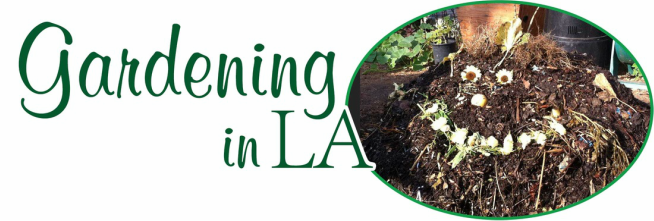
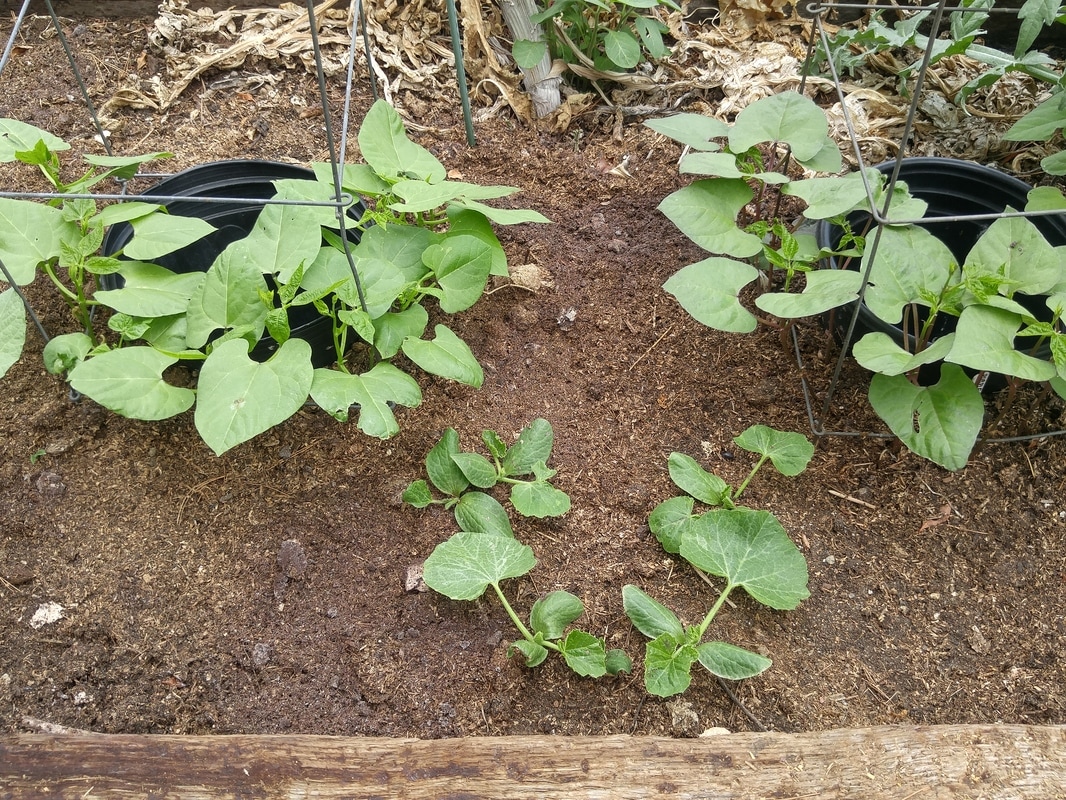
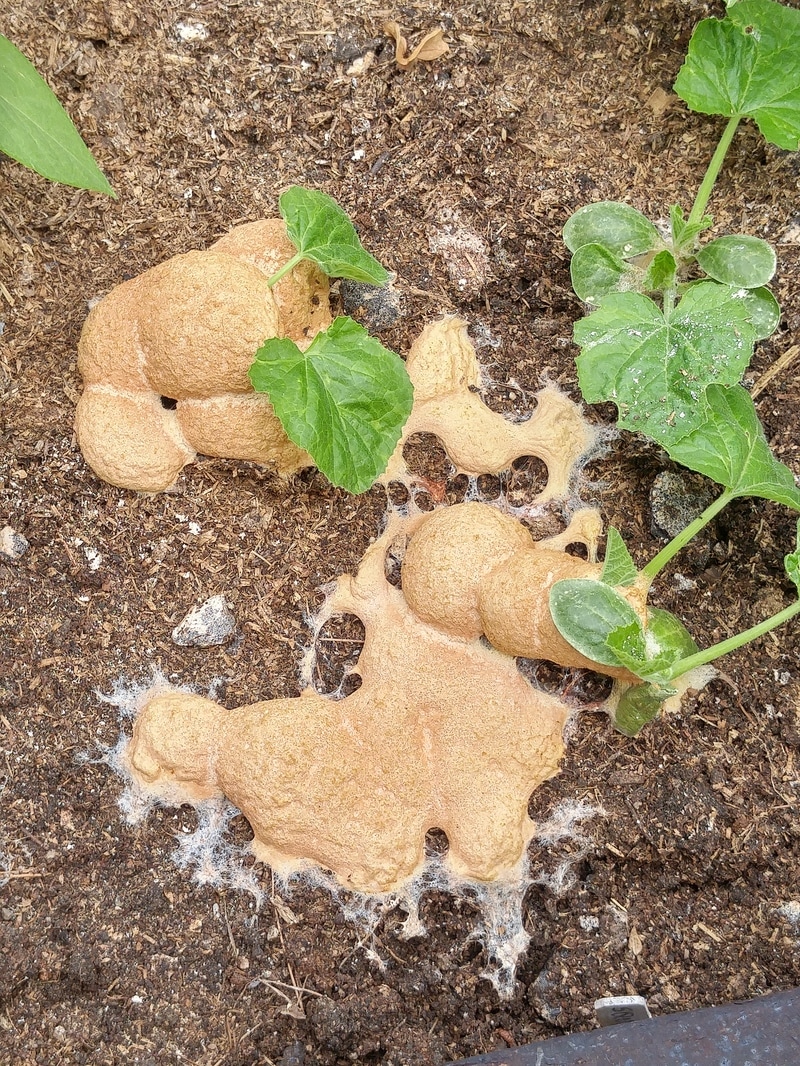
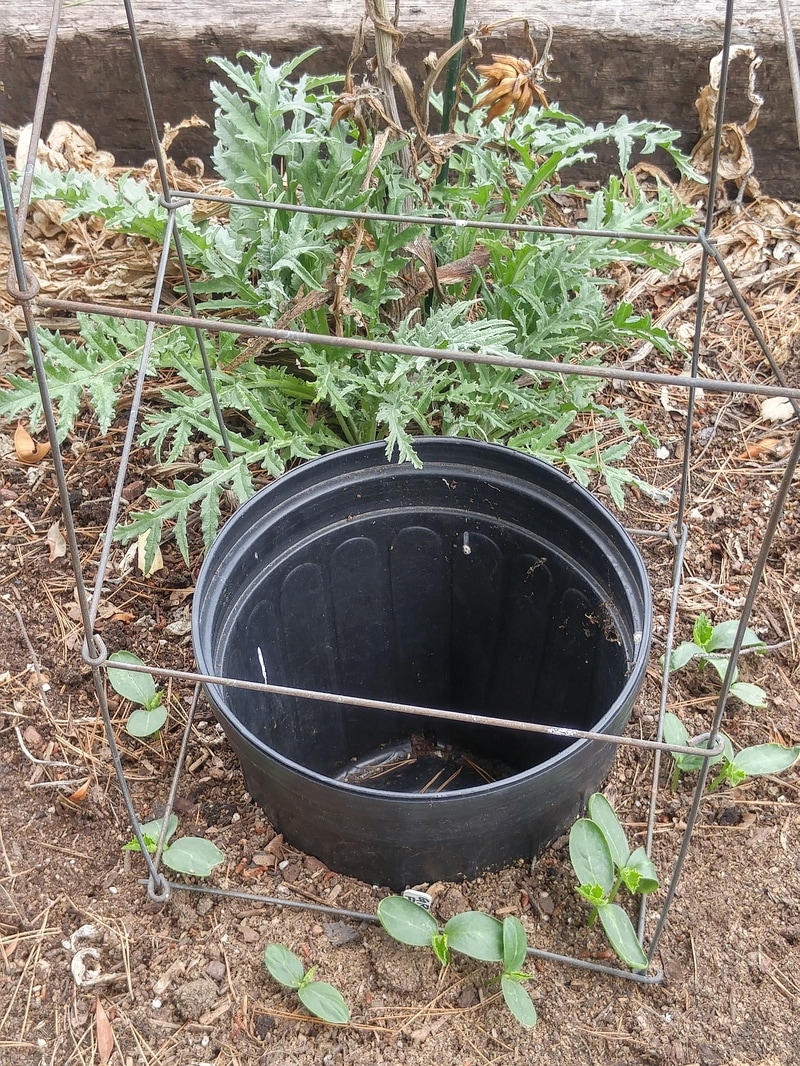
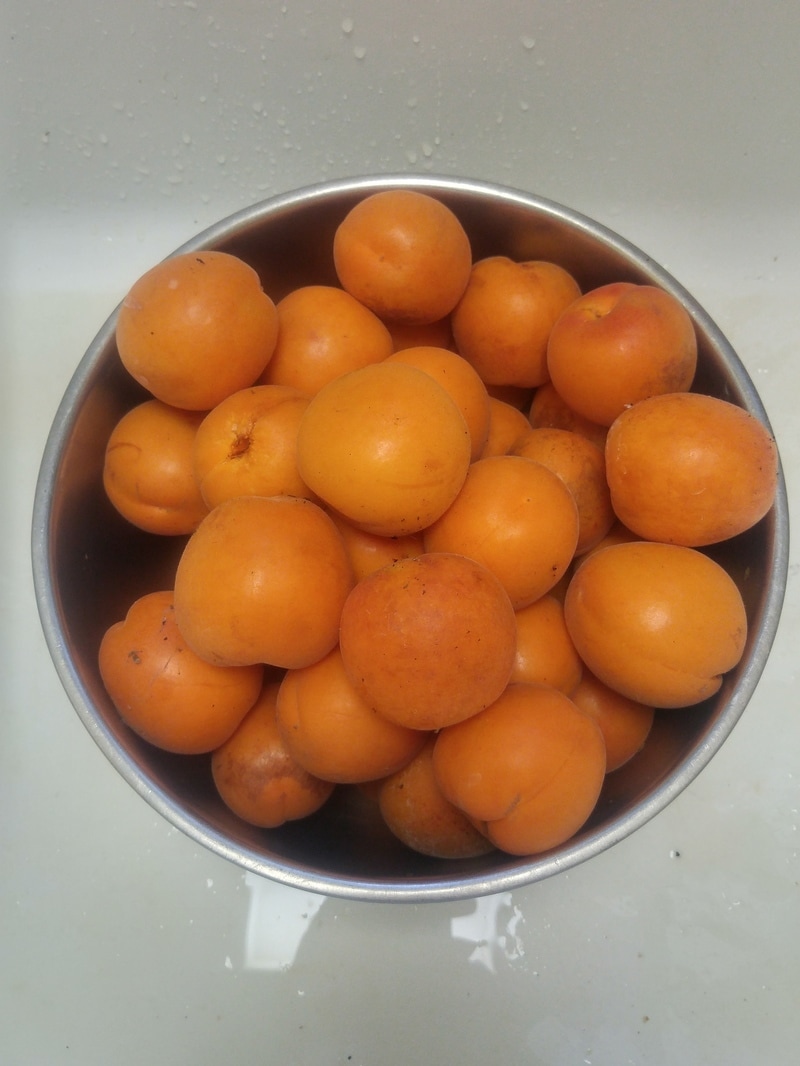
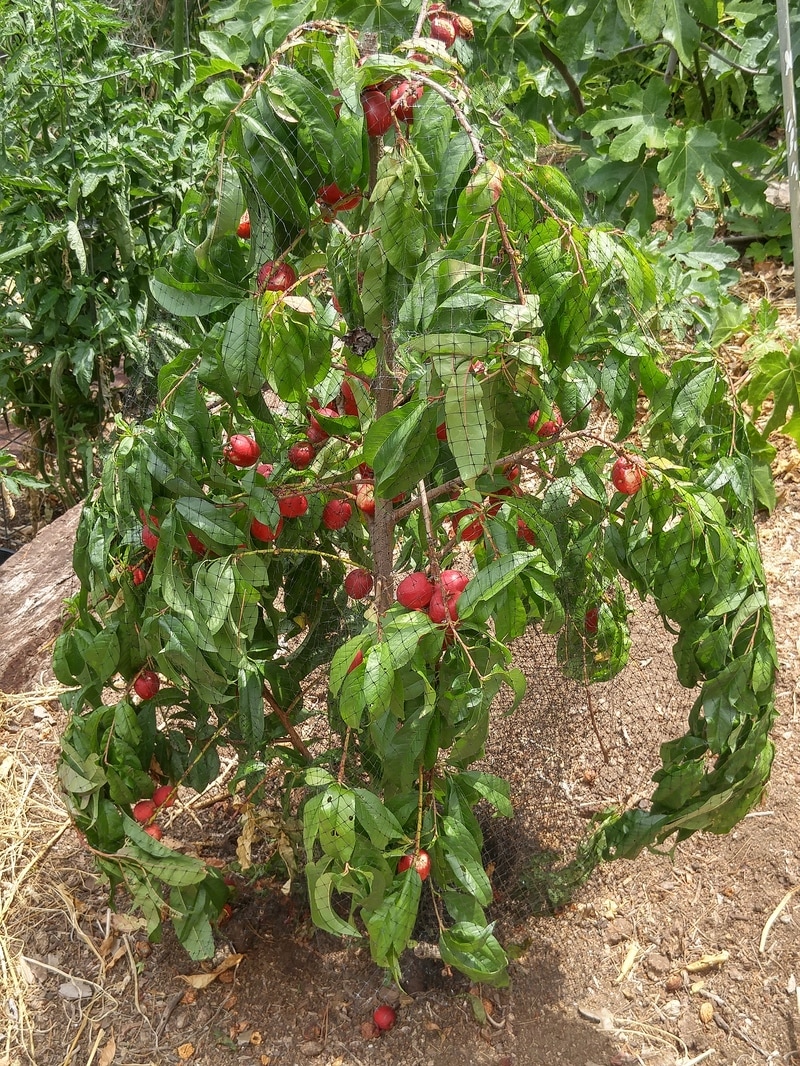
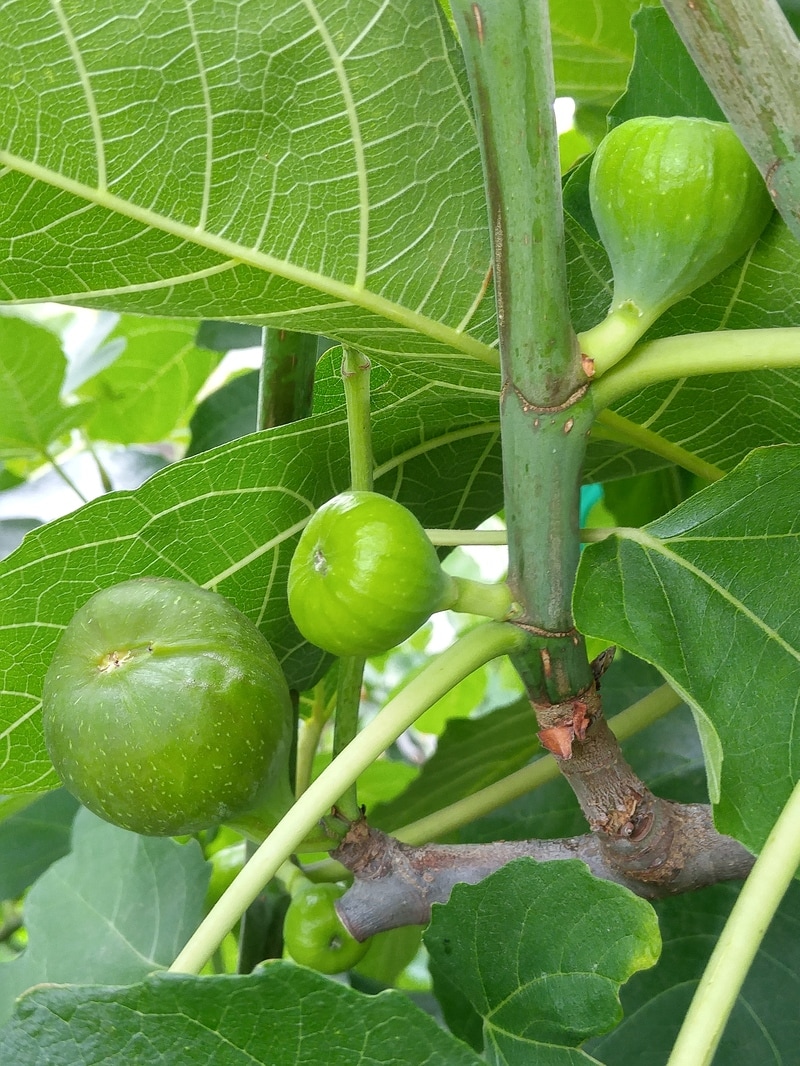
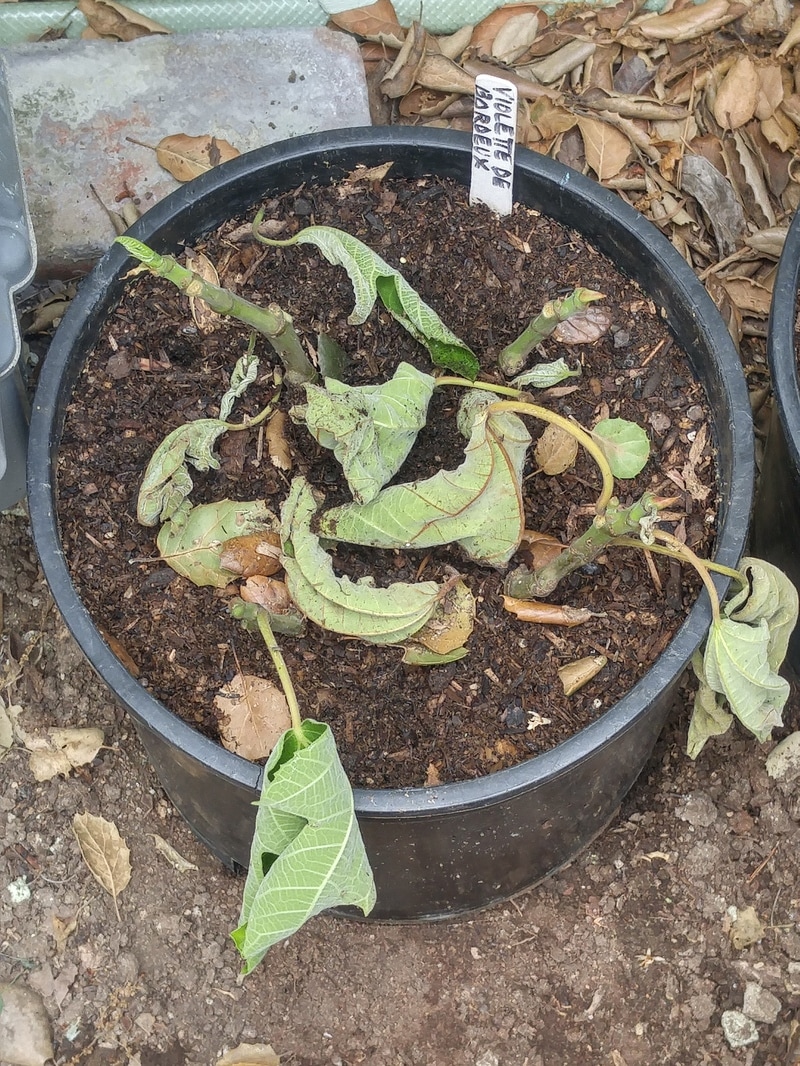
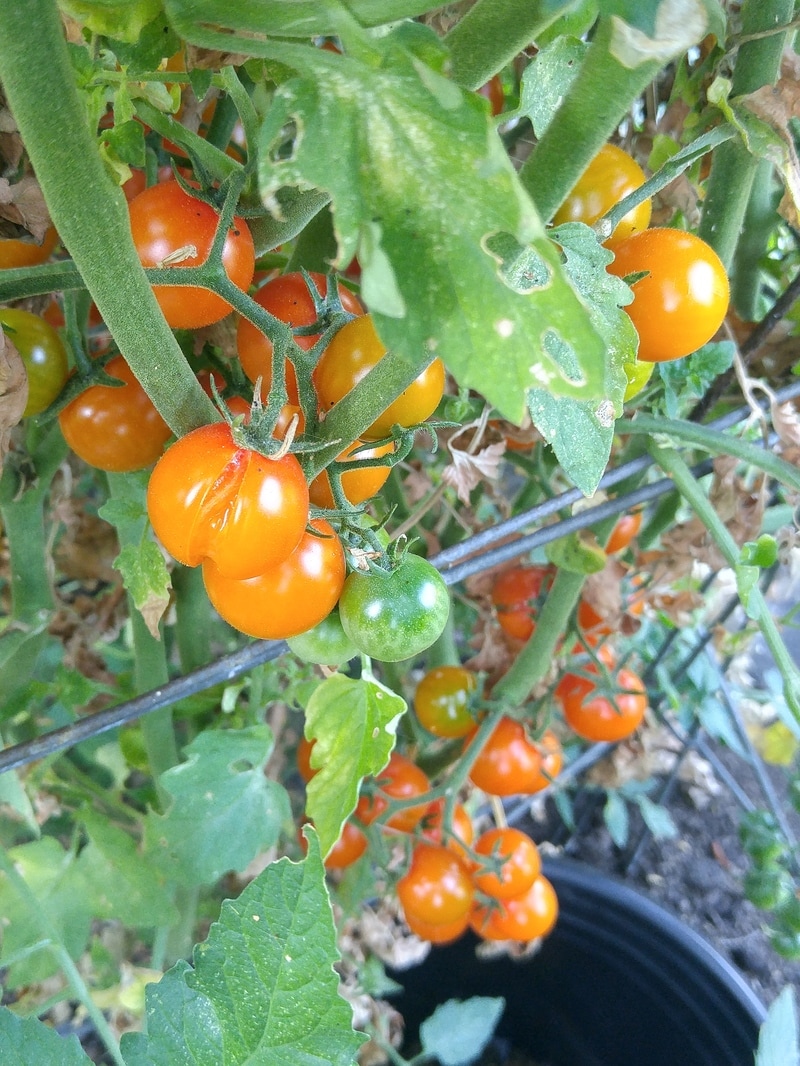
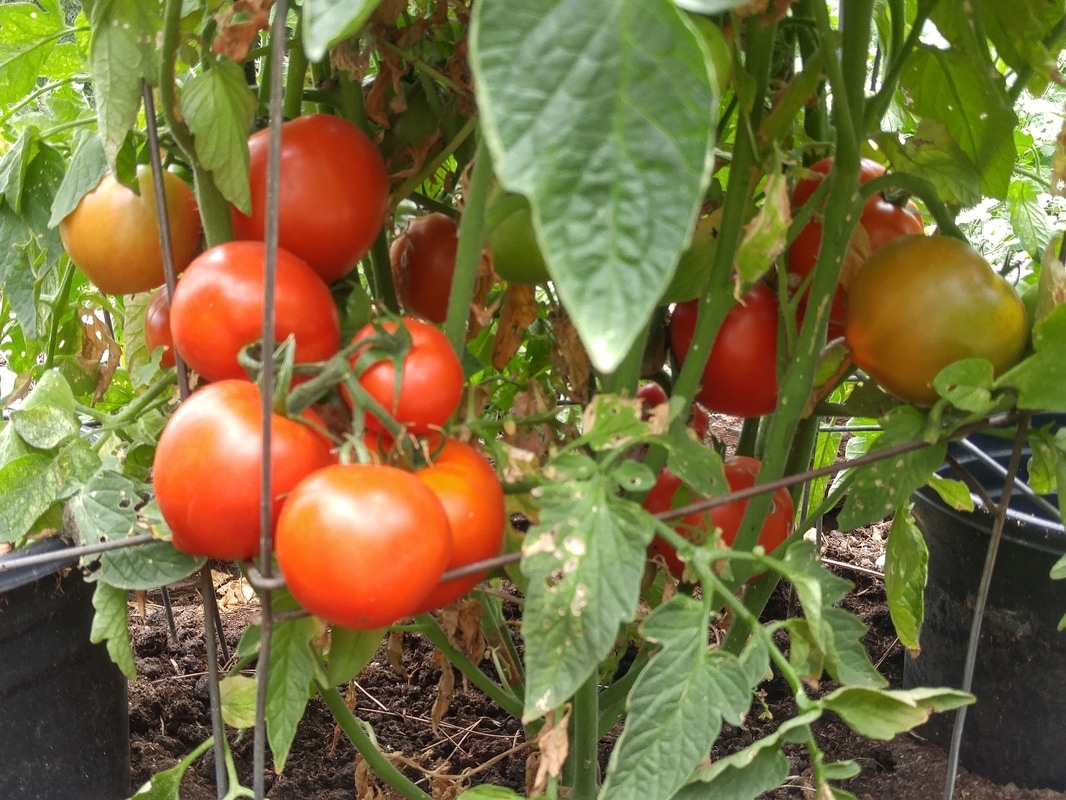
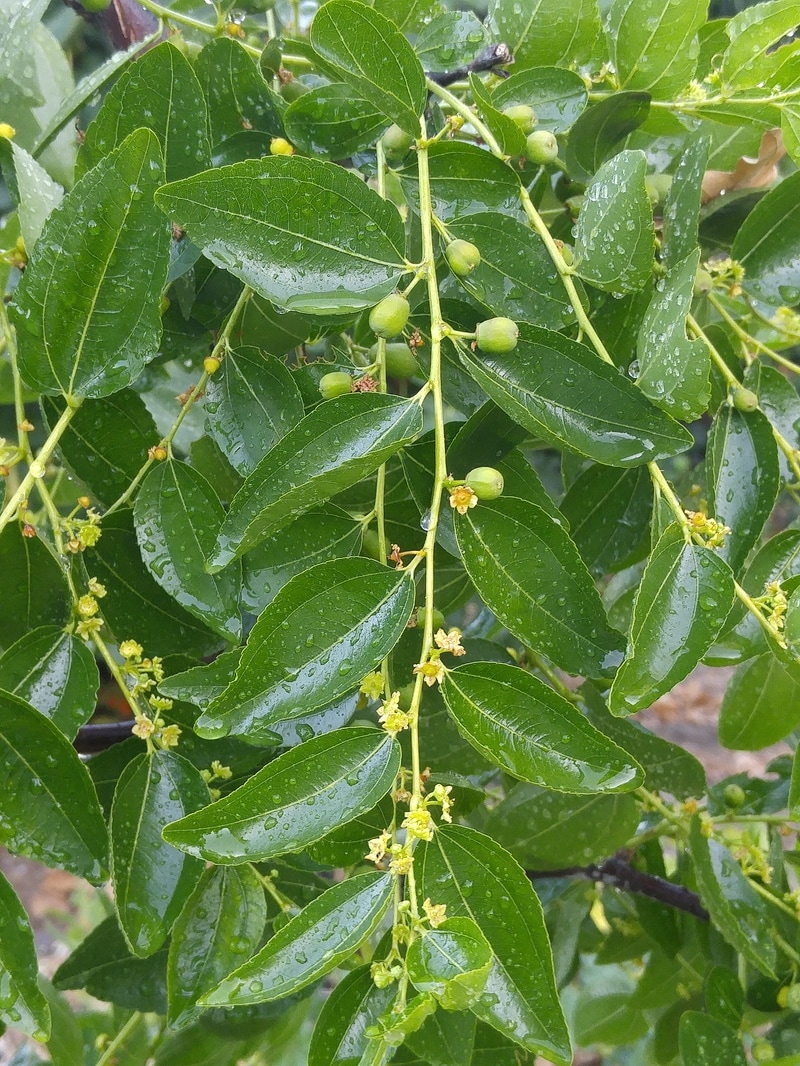
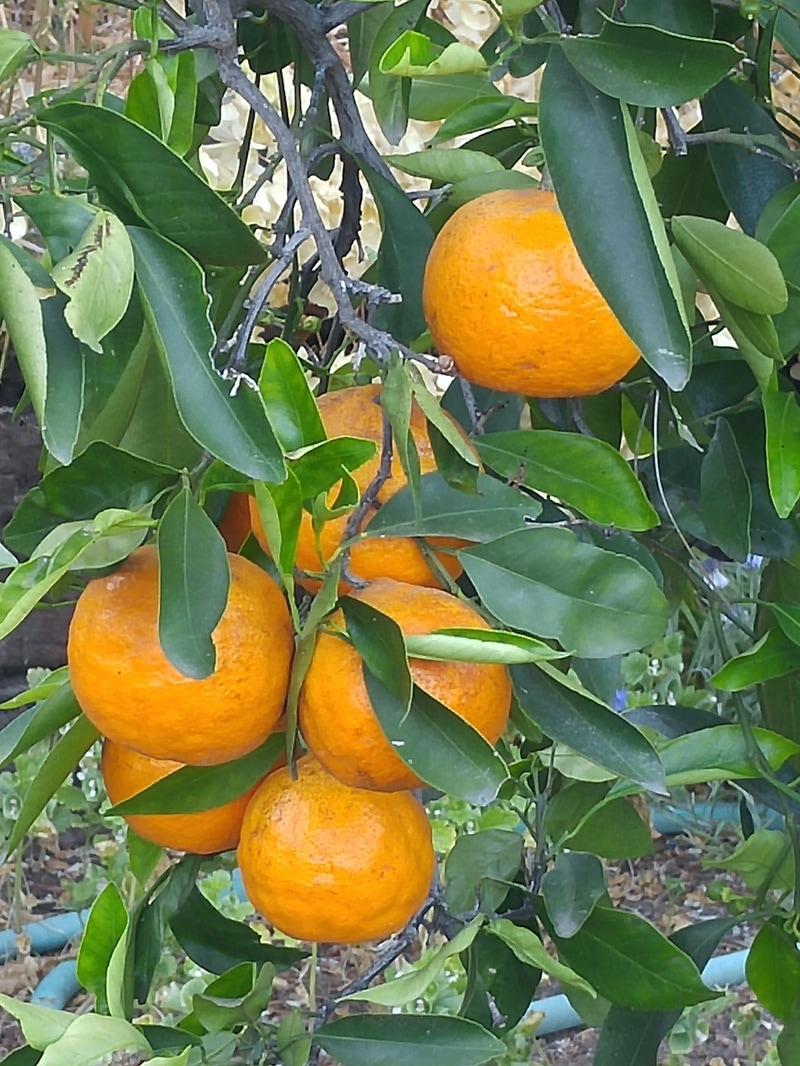
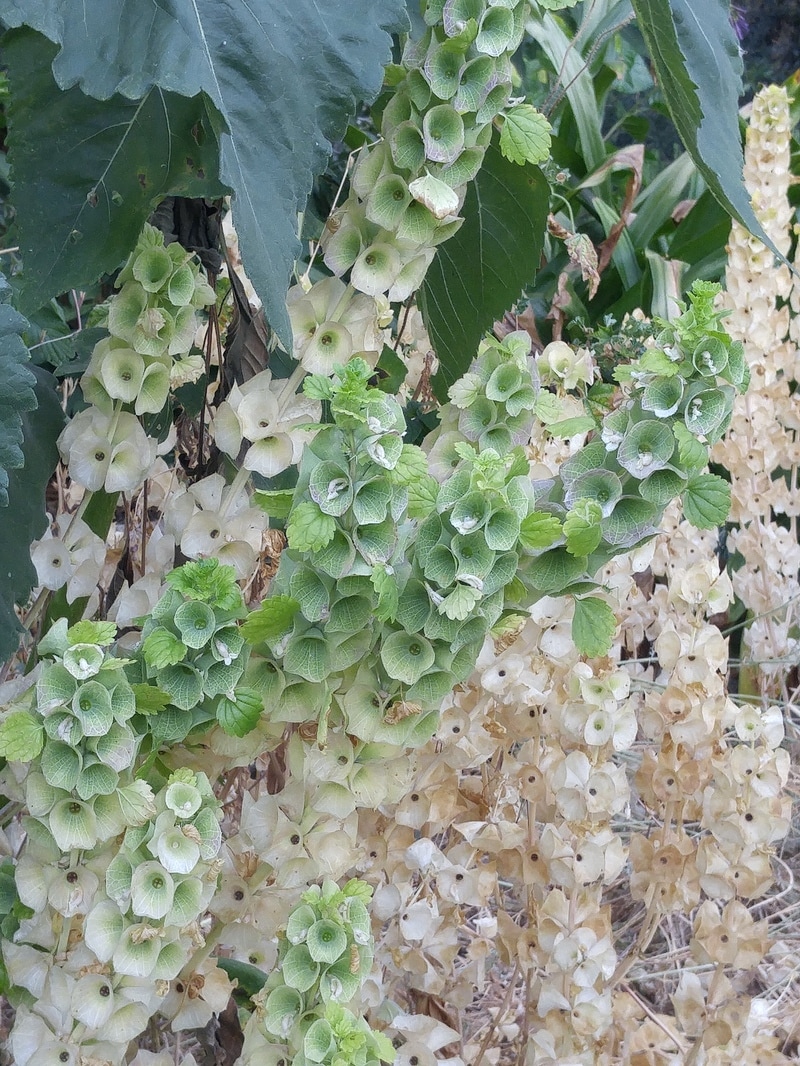
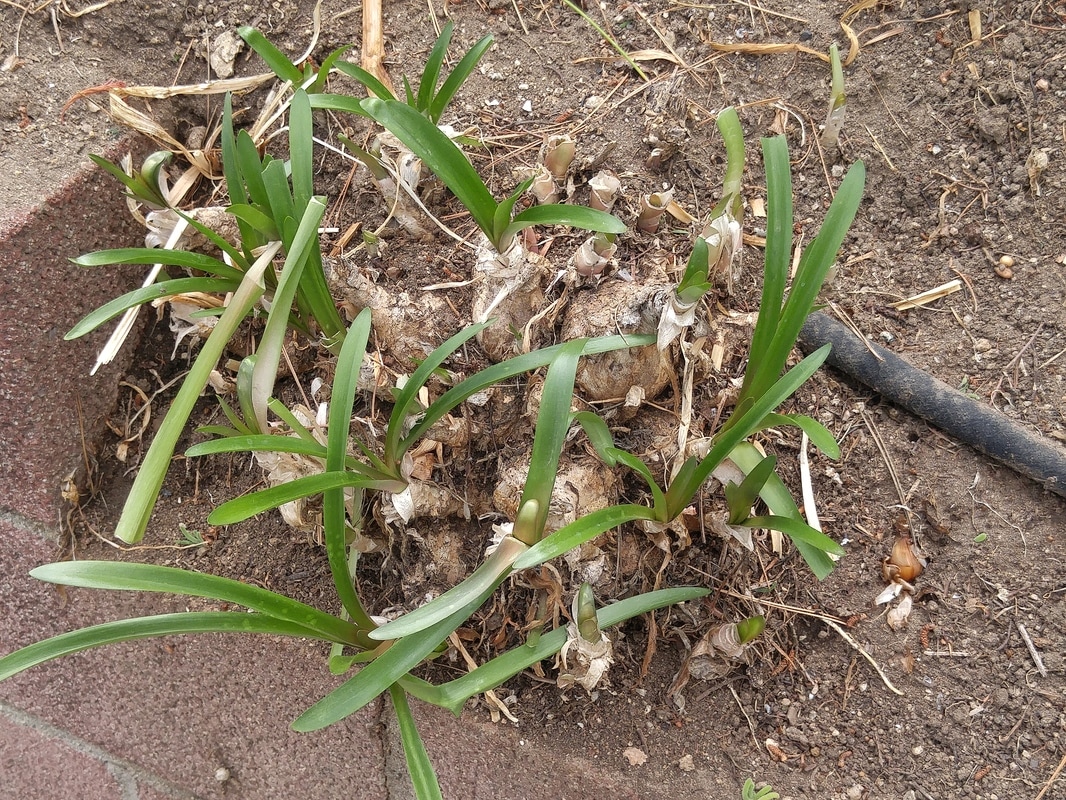
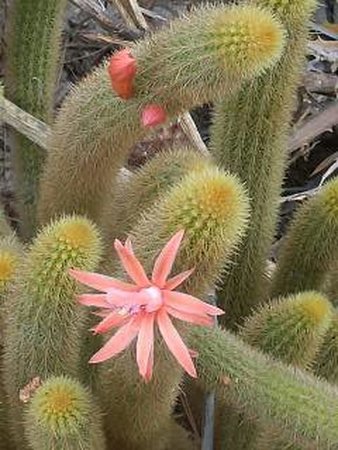
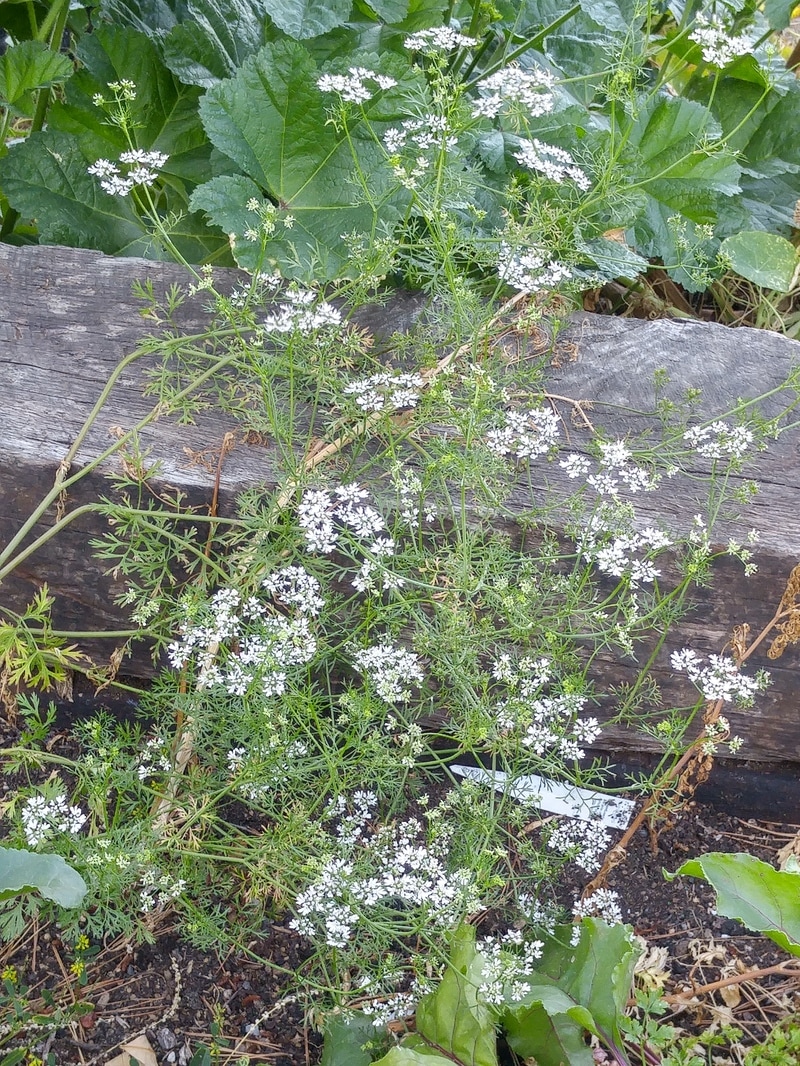
 RSS Feed
RSS Feed